If you’re looking for one of the best fitness trackers, you don’t necessarily need to spend over $200. How about the Amazfit Active Edge which costs $149 at Amazon? This stylish, “gorpcore” tracker tries to earn a spot amongst the likes of Apple and Samsung, but falls short.
There are a few things the Active Edge does right. It has the ability to track over 130 activities, including chess and board games, and its sensors accurately calculate your stress, oxygen saturation and other health stats. It’s also got a user-friendly companion app, and a very responsive touchscreen.
So what lets the Active Edge down? Sleep tracking isn’t accurate and detailed reports are hidden behind paywalls. The find-my-watch feature isn’t particularly helpful, and the Active Edge is missing features that are found in cheaper Amazfit models.
For the complete breakdown, read my full Amazfit Active Edge review.
Amazfit Active Edge review: Specs
| Specs | Amazfit Active Edge |
|---|---|
| Price | $149 / £149 |
| Display | TFT touchscreen |
| Display size | 1.32 inches |
| Size | 1.83 x 1.83 x 0.47 inches |
| Weight | 1.19 ounces (without strap) |
| Water resistance | 10 ATM |
| Working temperature | Not specified |
| Battery life | Up to 24 days |
| GPS | Yes |
| Compatibility | iOS, Android |
| Connectivity | Bluetooth, Wi-Fi |
| Onboard storage | No |
| Band material | Rubber |
| Third-party apps | Yes, Strava |
| Colors | Lava Black, Midnight Pulse, Mint Green |
Amazfit Active Edge review: Cheat sheet
- What is it? An active-style fitness tracker
- Who is it for? People who work out and want to track different activities
- How much does it cost? The Amazfit Active Edge is available for $149 / £149
- What do we like? The lightweight and premium build, the comfort, the ability to track 130+ activities, and the easy-to-use app
- What don’t we like? The sleep tracking is inaccurate and detailed reports are behind paywalls, there’s no voice assistant (which can be found on cheaper Amazfit trackers), and the find-my-watch feature is unhelpful
Amazfit Active Edge review: Price & availability
The Amazfit Active Edge has a retail price of $149 / £149 and is available to buy from Amazon or directly from Amazfit itself. The lowest I’ve seen it drop to is $109 / £79 at Amazon. Its price tag sees it competing with the likes of the Fitbit Charge 6 ($159) and the Fitbit Versa 4 ($199).
The Active Edge is available in three colors: Lava Black (our test model), Midnight Pulse, and Mint Green.
Amazfit Active Edge review: Design & display
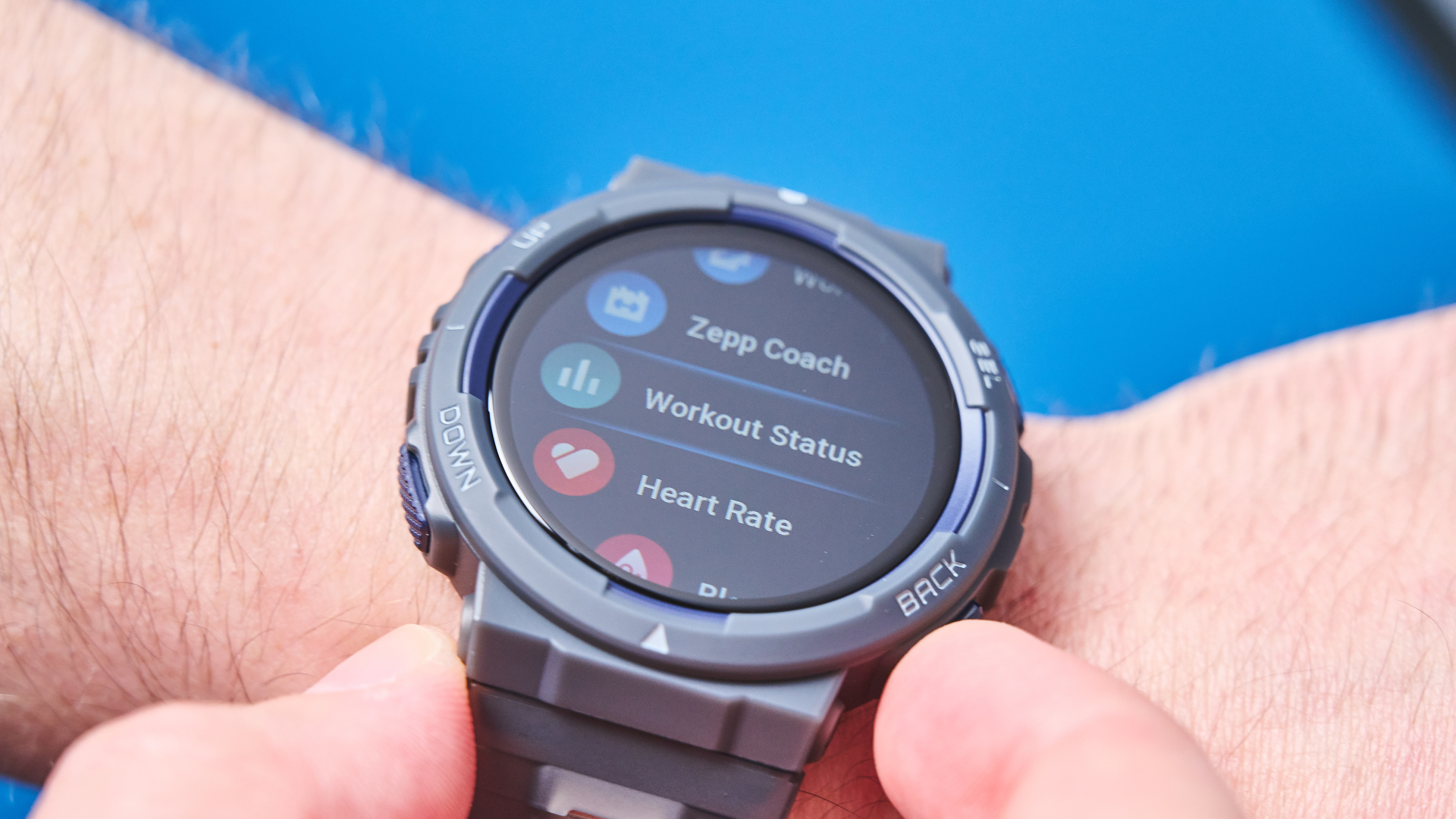
The Amazfit Active Edge’s dial measures 1.83 x 1.83 x 0.47 inches, which is just slightly smaller than that of the Coros Vertix 2S (1.98 x 1.98 x 0.62 inches, $699), my favorite watch. Featuring a 1.32-inch TFT touchscreen, Amazfit’s offering has a 360 x 360 display resolution. The touchscreen is very responsive and quick. There are also over 100 watch faces to choose from.
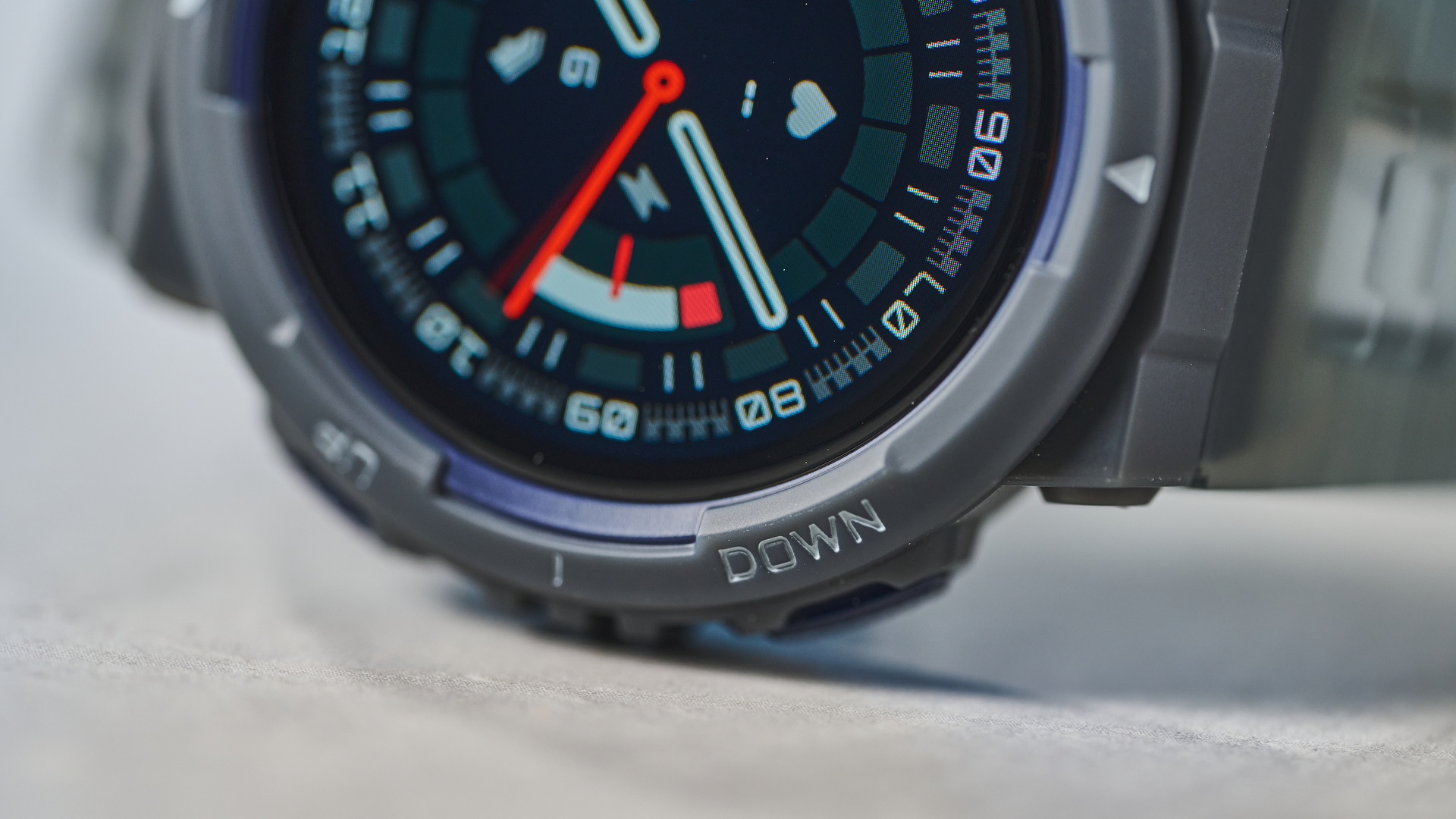
The Active Edge weighs just 1.19 ounces without the rubber strap, and the strap itself is very comfortable. While my coworkers complained about the Amazfit Bip 5‘s ($89) and the Active’s ($129) silicone strap being too tight, I haven’t had any problems with the Active Edge’s.
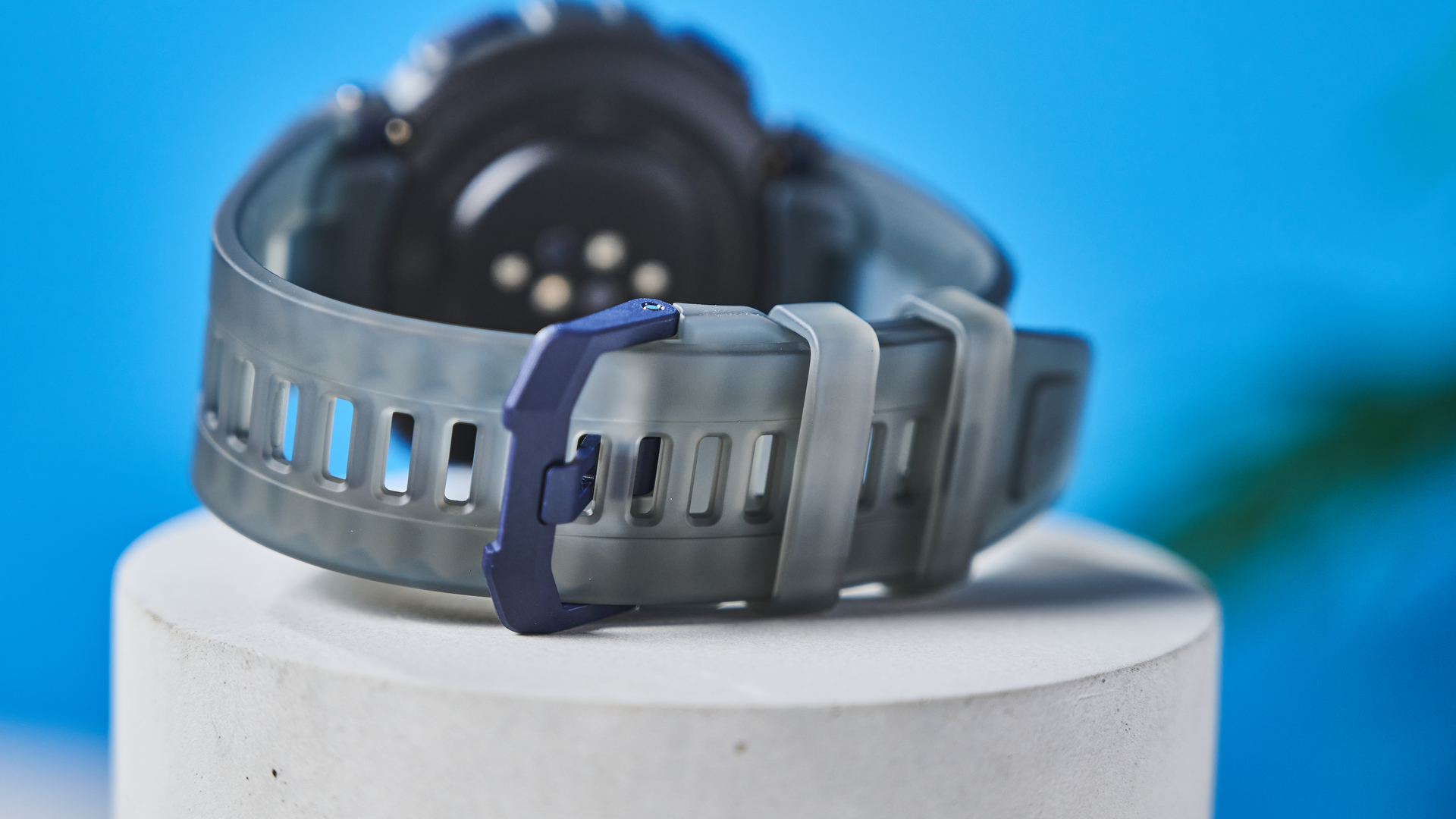
Similar to the (much) more expensive Vertix 2S, the Active Edge has a 10 ATM waterproof rating, which means you can dive down to 100m while wearing it, making it suitable for water activities like snorkeling. I had no problems submerging it in a pool or wearing it in the shower.
Amazfit Active Edge review: App
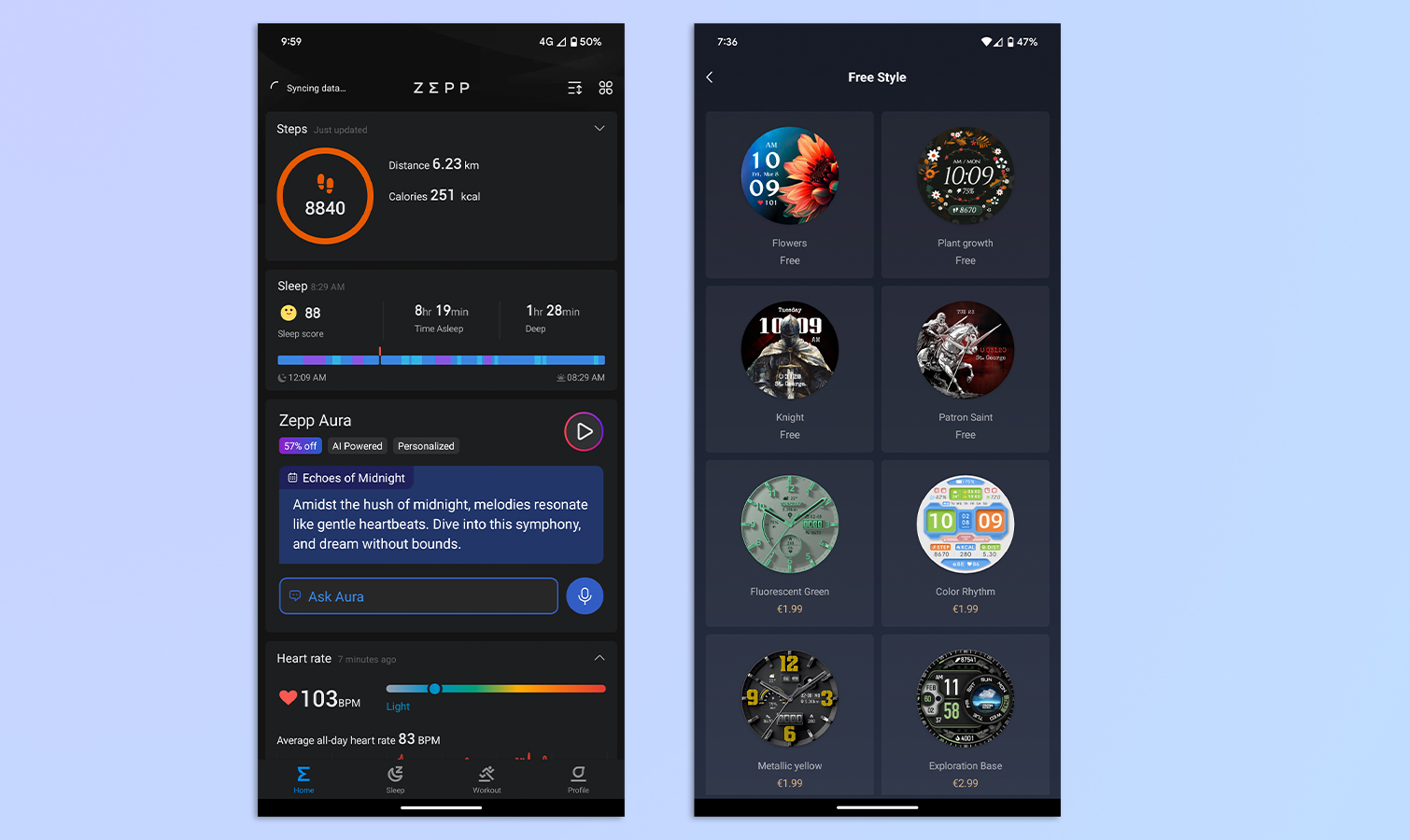
The Amazfit Active Edge uses the Zepp app, available on either iOS or Android. With easy-to-read metrics and an intuitive interface, the app is a delight to use — as long as you’re happy to ignore the occasional paywall pop-up.
You can use the app to customize the watch face — many of which are free but some you must pay for. There’s also a feature to help you find your watch, but although it will vibrate intensely, it won’t emit any sound. The vibration didn’t help me locate the watch when it was in my bedroom while I was in the kitchen, so it isn’t that useful, but better than nothing.
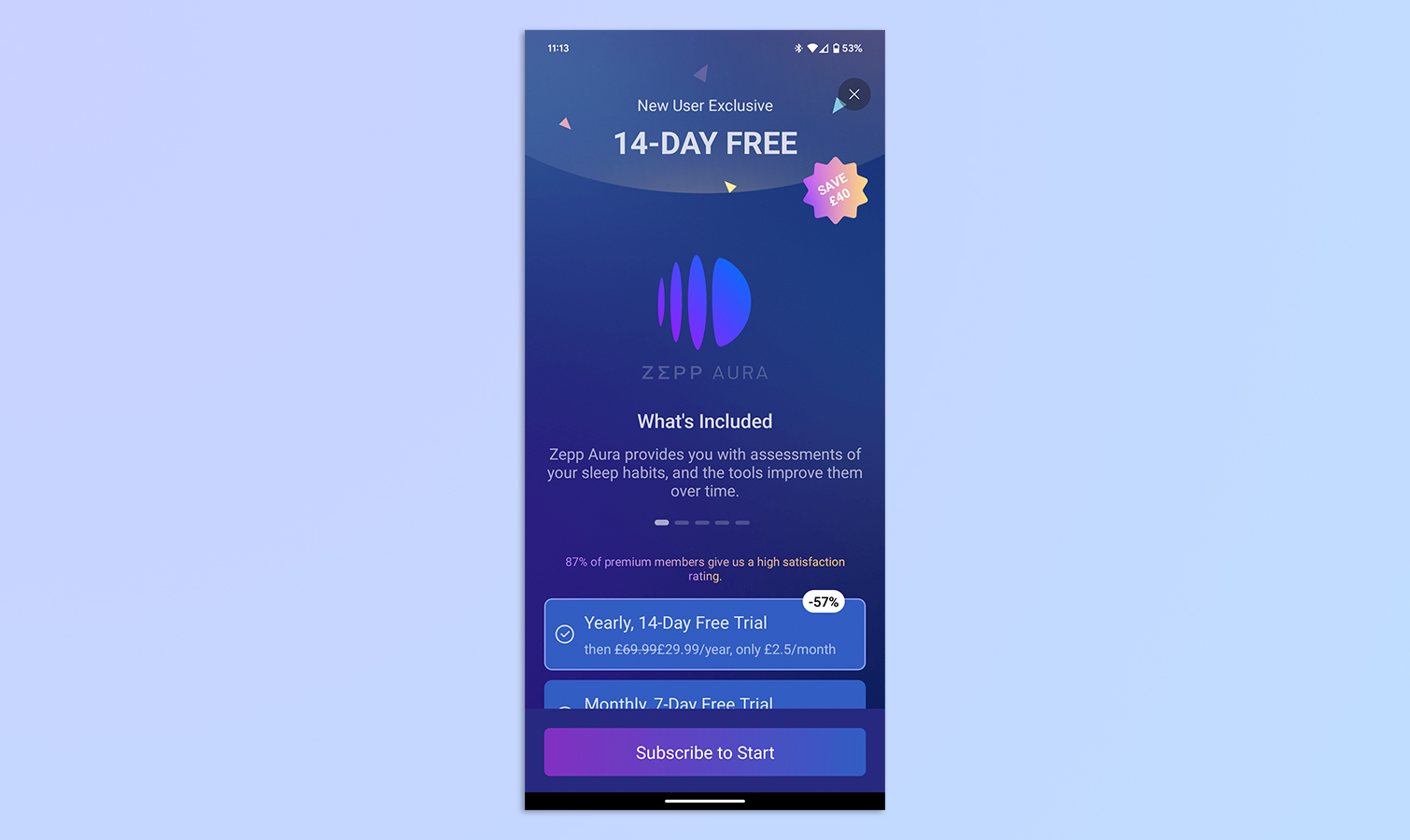
Via the app, you can access Zepp Aura, an AI-generated Q&A section which costs $69 to access. There’s no preview, so you can’t see in advance what you’re signing up for. I think this is a missed track — after all, wouldn’t a preview entice users to subscribe?
Amazfit Active Edge review: Health tracking & GPS
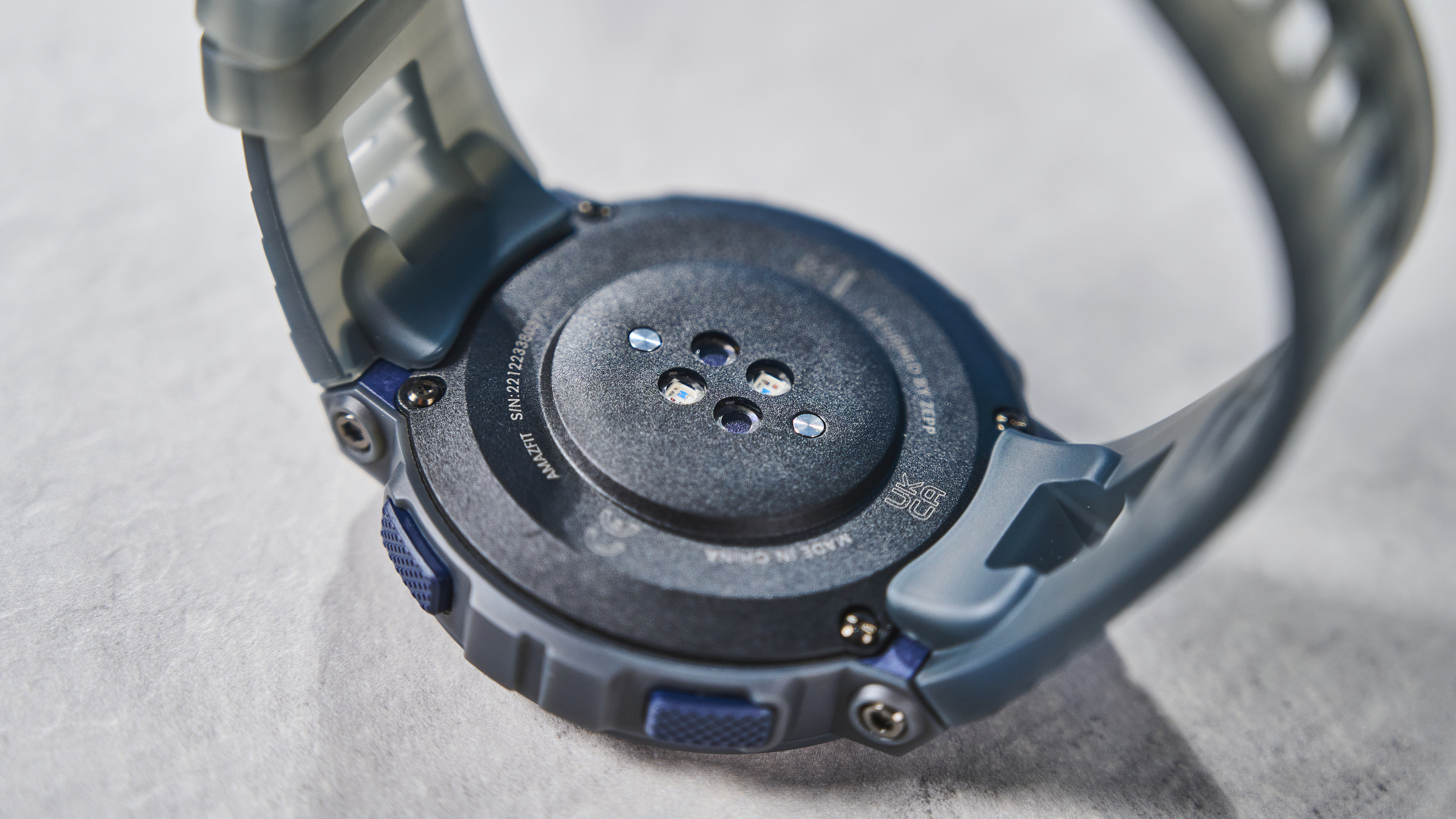
The Amazfit Active Edge is packed with health tracking features. Flip over the fitness tracker and you’ll see a biometric sensor, plus an acceleration and gyroscope sensor for tracking movement. The Active Edge can track a range of stats, such as heart rate, blood oxygen and stress. I found the sensors to be accurate, and comparable to the readings from the Coros Vertix 2S.
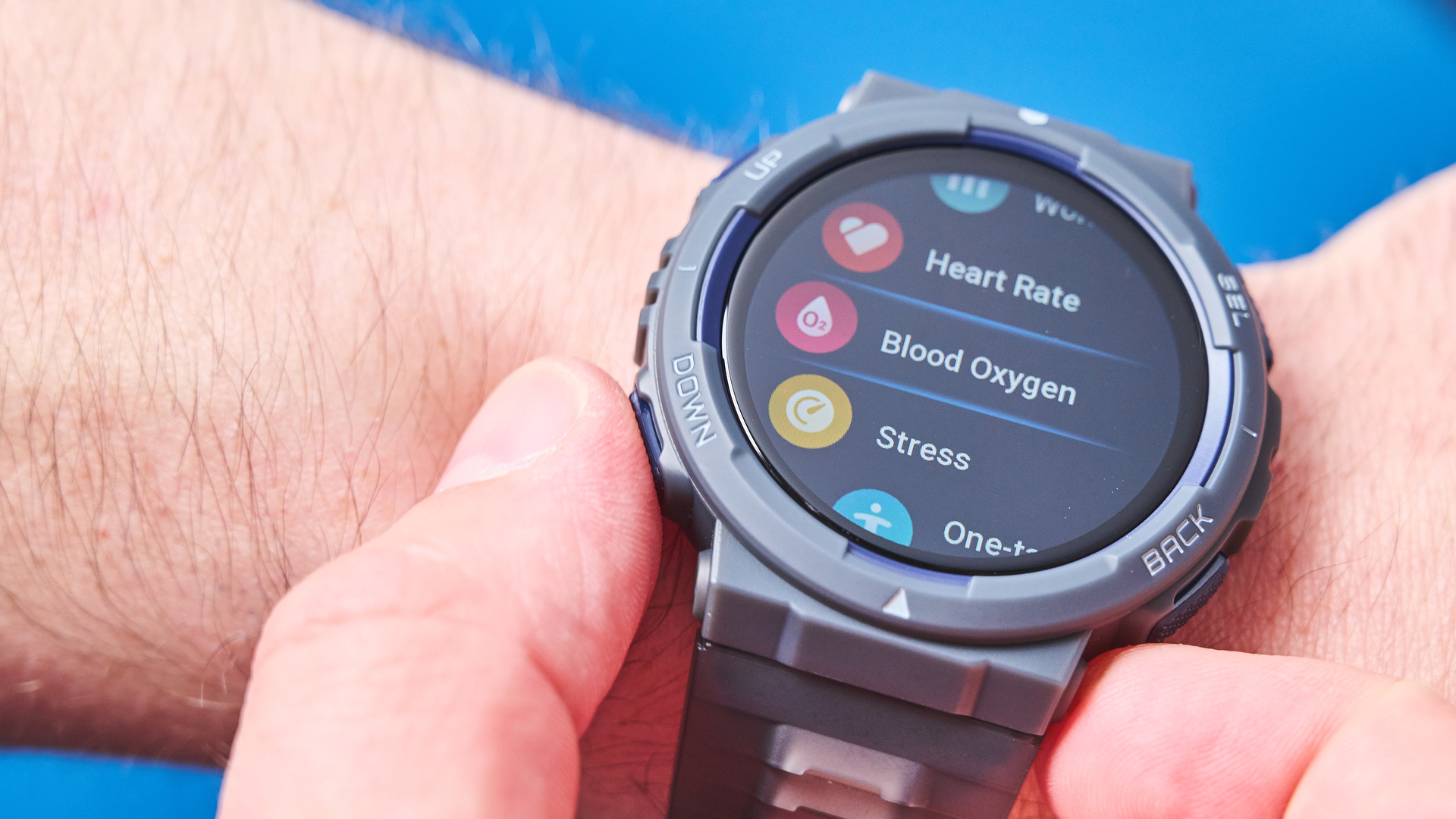
Stress isn’t measured throughout the day, though, as you need to select it via the touchscreen and then hold still for 45 seconds while the fitness tracker records it. There’s also one tap to control them all — select “one-tap measuring” if you want to measure your heart rate, stress, blood oxygen and breathing rate at once.
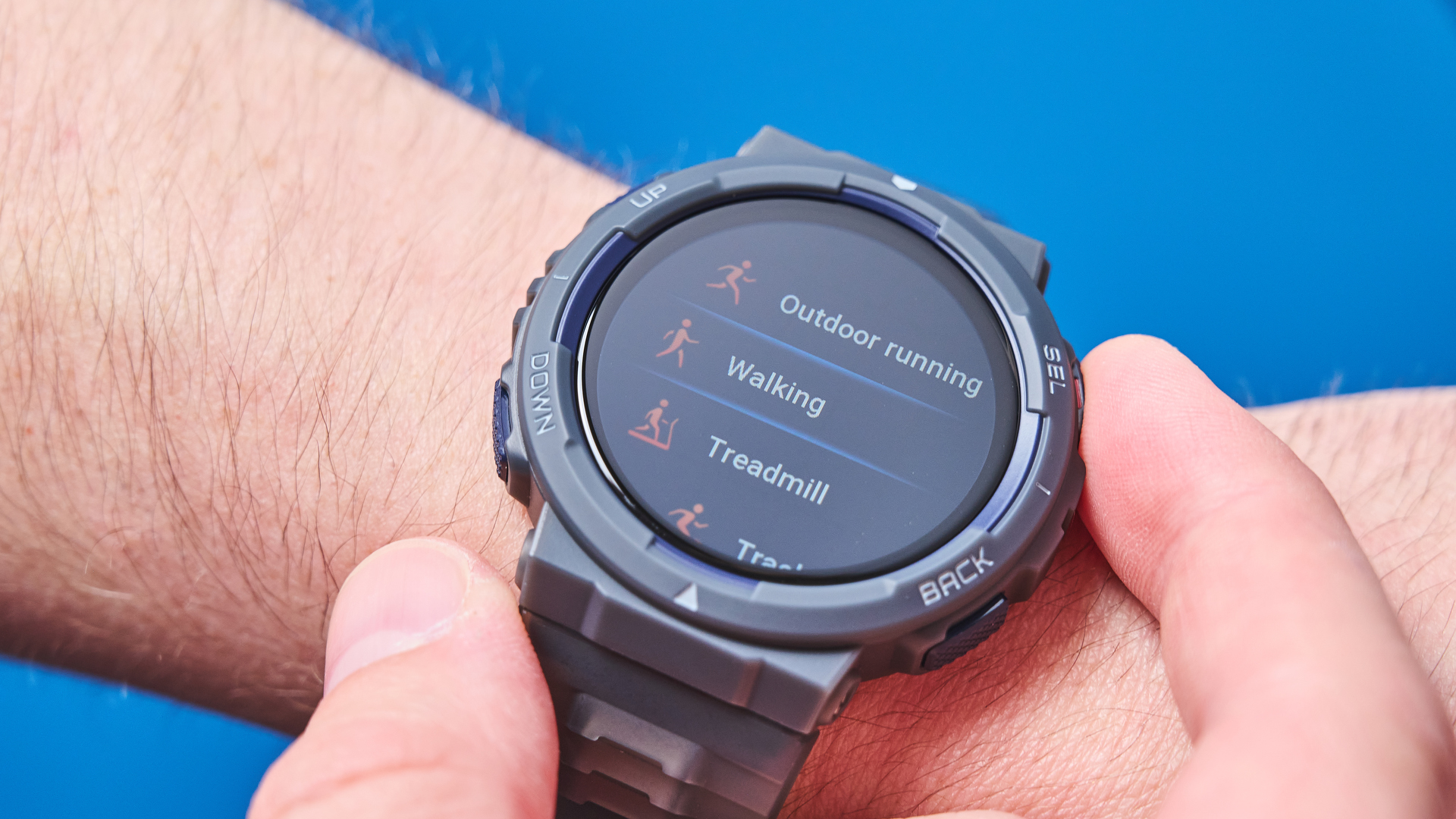
The aforementioned sensors are also used to track over 130 activities. You get your regular activities, like running, swimming and hiking, but you can also track chess and board games. To me, this feels like a gimmick as all it does is track your stress and calories burnt while… playing chess?
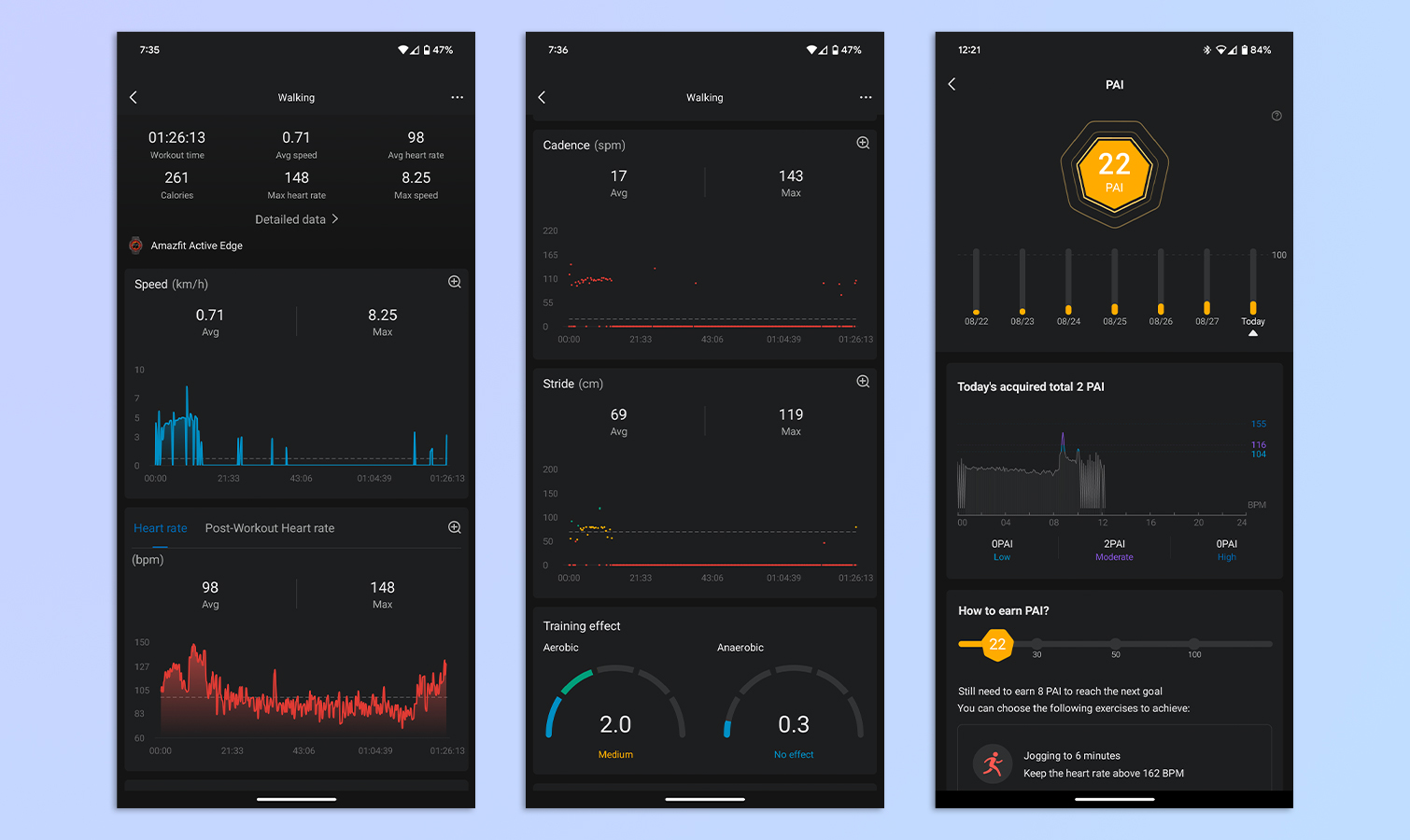
As for other workouts, the Active Edge accurately tracks these. I wore the fitness tracker while walking to and from work, around the city, running on the treadmill, and spinning, and I was satisfied with the stats presented. It accurately tracked my speed, heart rate, post-workout heart rate, heart rate zones (aerobic, anaerobic, intensive), and more.
But much like the Bip 5, the Active Edge’s fitness tracking is far from perfect. The Zepp app awards you a PAI score — you earn Personal Activity Intelligence points as your heart rate increases, according to a scientific study referenced within the app. When I say it’s hard to earn PAI points, it’s really hard. The app really makes you work for them. Last Thursday, I walked just under 8,000 steps, ran on the treadmill for 45 minutes, used a spinning bike for 15 minutes, and stretched for 10 minutes, which earned me only 11 PAI. Granted that it wasn’t an intensive workout, but I still found the PAI score underwhelming.
Amazfit Active Edge review: Sleep tracking
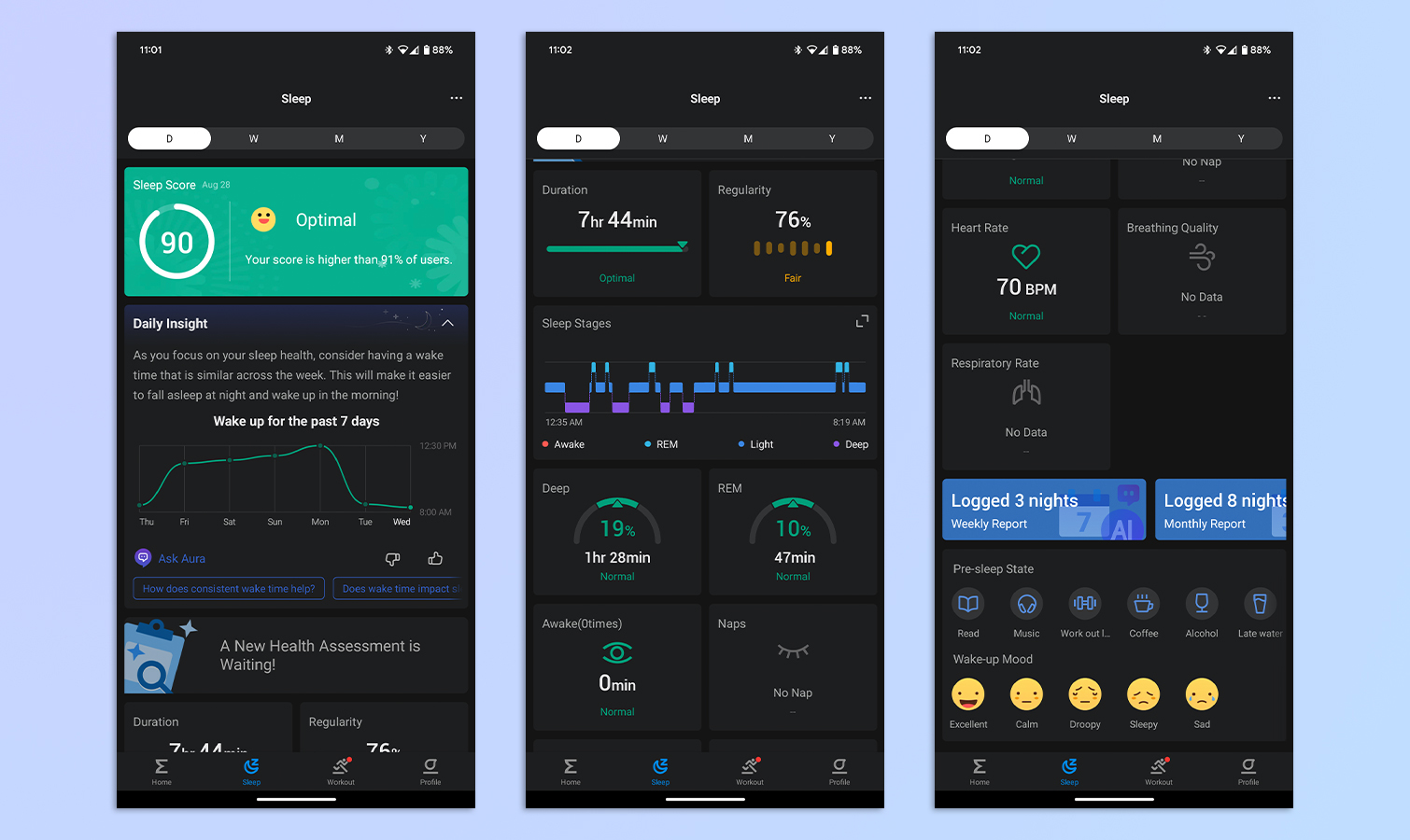
I’m a finicky sleeper and I tend to toss, turn and wake up in the middle of the night, so I value the accurate sleep tracking some fitness trackers and smart watches offer. I barely noticed the Amazfit Active Edge while sleeping, so it’s a very comfortable fitness tracker. You can choose your bedtime either via the app or the tracker itself, and the tracker will pause all notifications until it becomes aware that you’ve woken up. It tracks the four stages of sleep: when you are awake, in light sleep, in deep sleep, and in REM.
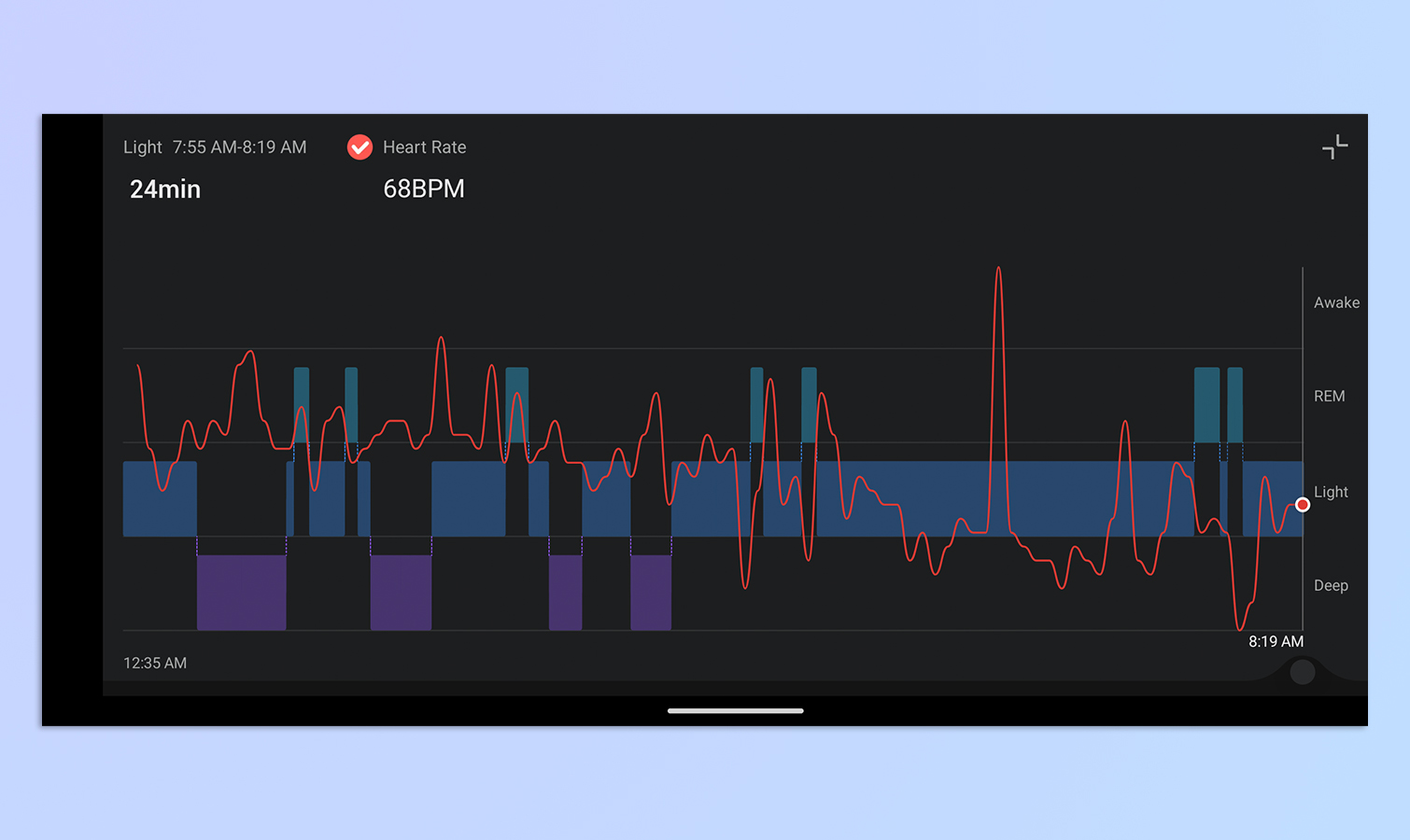
It also tracks your heart rate and overlays it on the sleep graph to give you some preliminary insight. But if you want to access the detailed report which is initially generated after you record your sleep for a week, you’ll need to subscribe to the premium version of the app which, again, costs $69 per year.
I find the Active Edge’s sleep tracking nowhere near as accurate as the Coros Vertix 2S’. I know the Vertix 2S costs a lot more, but that doesn’t mean the Active Edge should be cutting corners when it comes to something as important as sleep. There were multiple nights when I woke up, got out of bed to get a glass of water, and even checked my phone. For those 15 minutes or so, I was awake, but the Active Edge did not log it as such. Similarly, it only logged that I was awake in the morning about 40 minutes after I had gotten out of bed and was getting ready for work.
The point of a sleep graph is so that I can check my sleep quality the next day and eliminate distractions or bad habits that result in poor sleep — drinking or doomscrolling right before bed, for example. But I’m not convinced I can fully trust the Active Edge.
If you want accurate sleep tracking, I recommend the Fitbit Charge 6 instead, which is our best budget fitness tracker for sleep.
Amazfit Active Edge review: Extra features
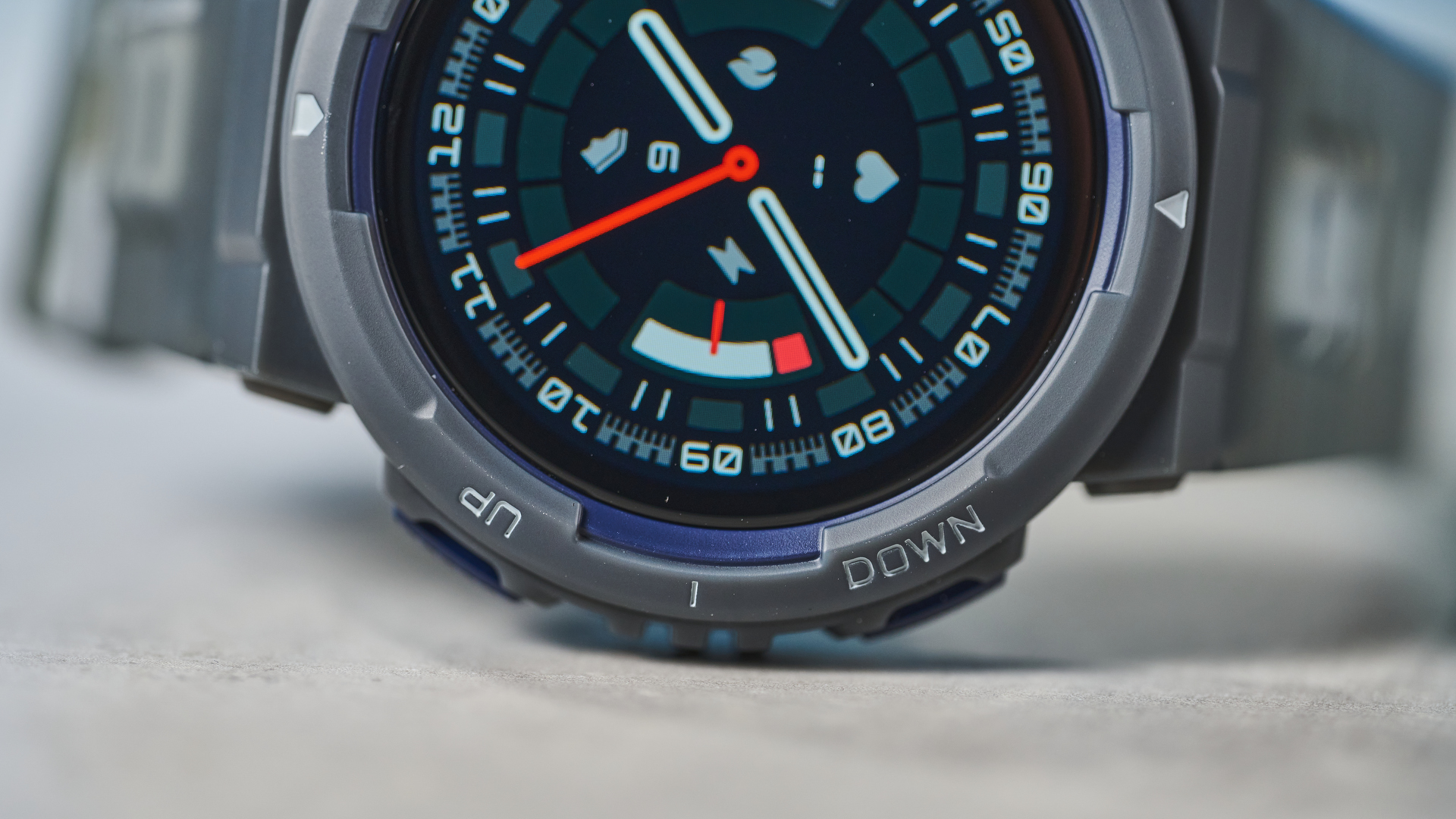
Unlike the cheaper Amazfit Bip 5 and the Active, the Active Edge does not feature Zepp Flow — a voice assistant feature. I’m surprised by this because the Active Edge is the most expensive of the three. This also means that you can’t respond to messages via the fitness tracker itself.
You can, however, control your music via the touchscreen. If you’re listening to Spotify or Apple Music on your smartphone, you can go to the next or previous track and play/pause without needing to take your phone out of your pocket. Handy!
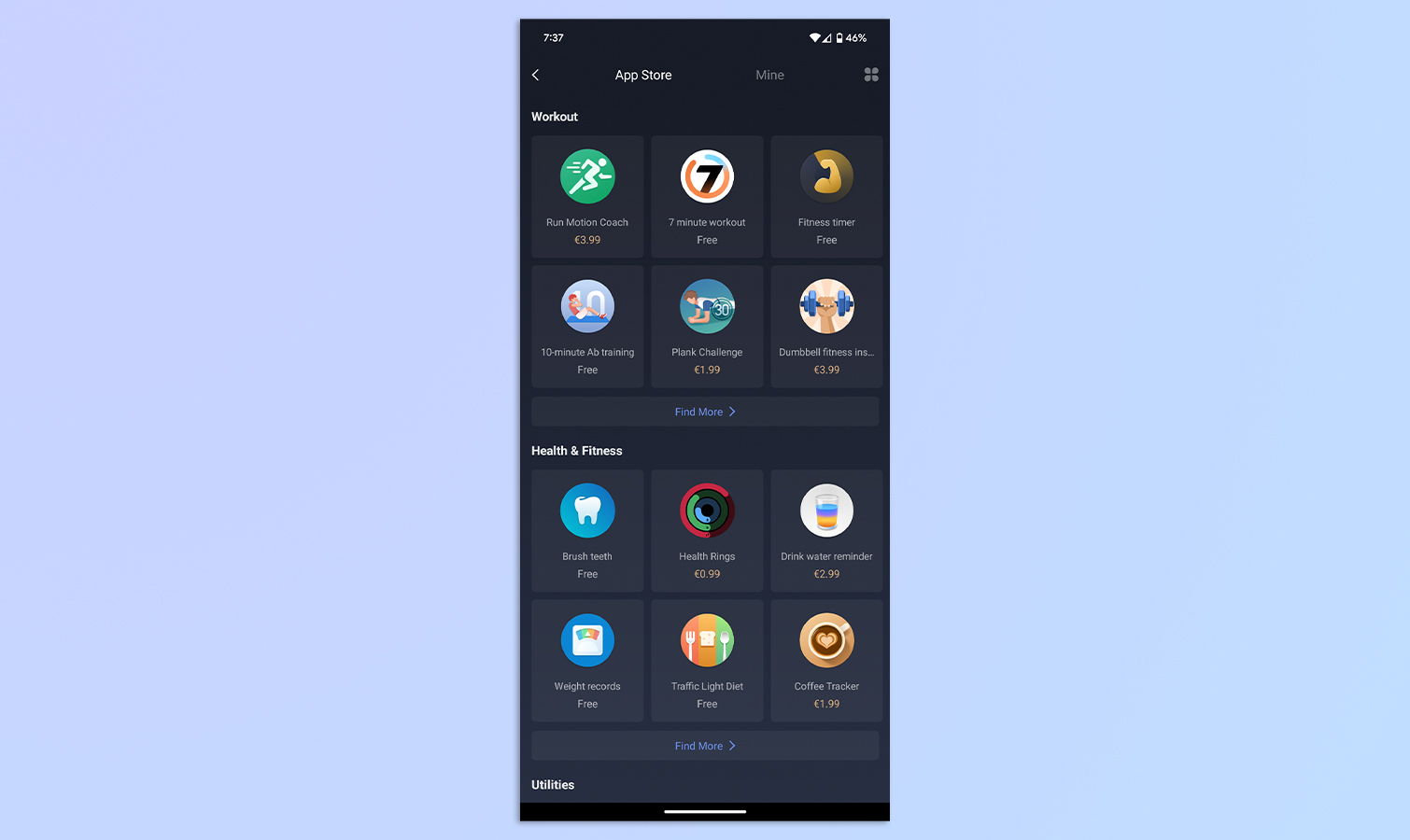
When it finally logs that you’re awake, it will send you an update which includes the weather forecast for the day and other reminders you have set up via the app. You can also install different cards for specific reminders, but a lot of these are behind a paywall. For instance, you can install a “brush teeth” card which sets a two-minute long timer and tracks how well you brushed — and it’s free. But the “drink water reminder” will cost you a couple of dollars, as will the “plank challenge” card.
Amazfit Active Edge review: Battery life
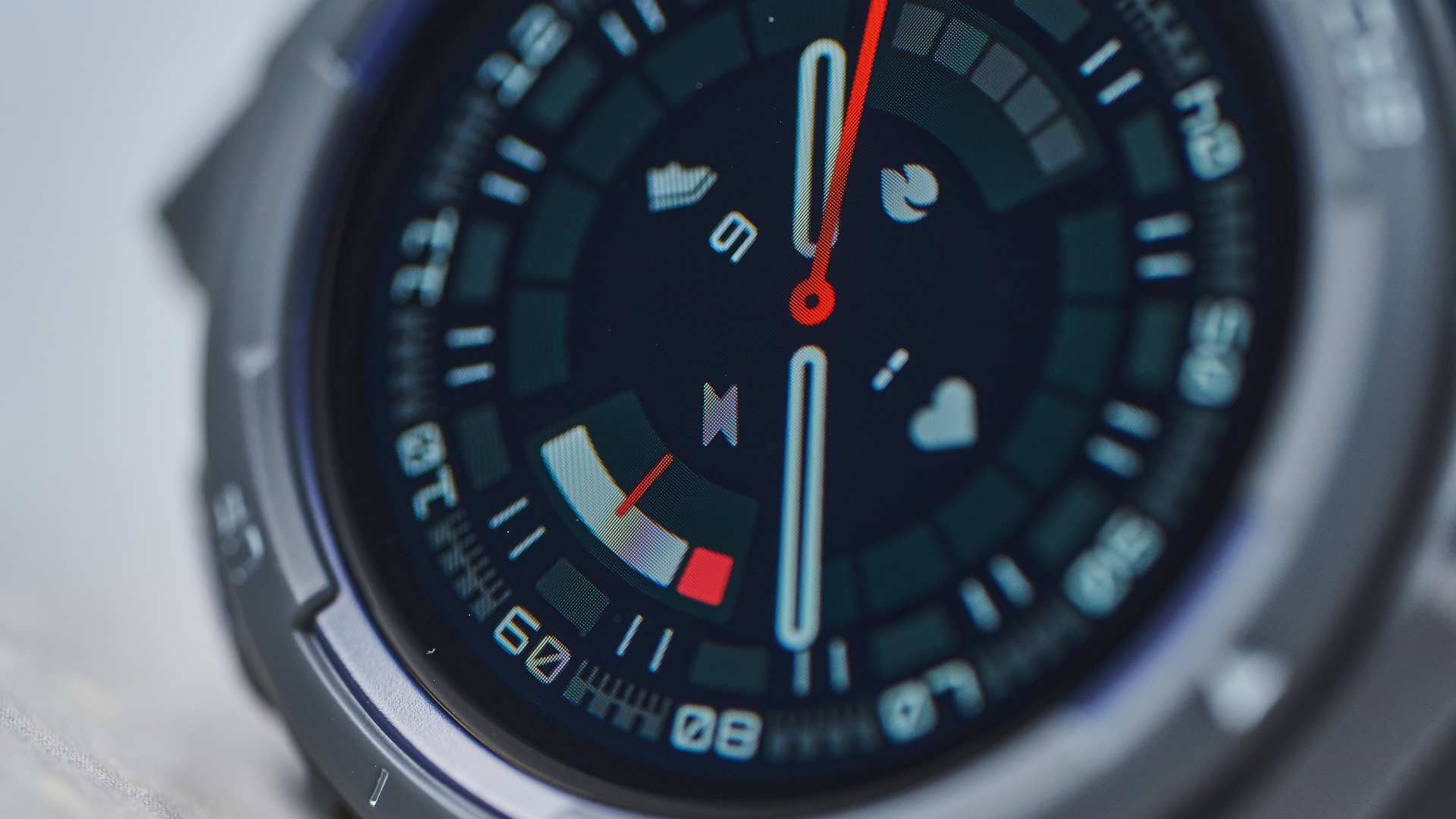
Using the included proprietary cable, it takes just under two hours to go from zero to 100%. Here’s what Amazfit claims about the Active Edge’s battery life:
| Mode | Battery duration |
|---|---|
| Typical usage | 16 days |
| Battery saver | 24 days |
| Heavy usage | 10 days |
| Continuous GPS usage | 20 hours |
I wore it for eight days and the battery dipped to 48% — think of me using this fitness tracker in the “typical usage scenario” and it’s on track to die by next week. The Fitbit Charge 6 pales in comparison as its battery lasts for just six days.
Should you buy the Amazfit Active Edge?
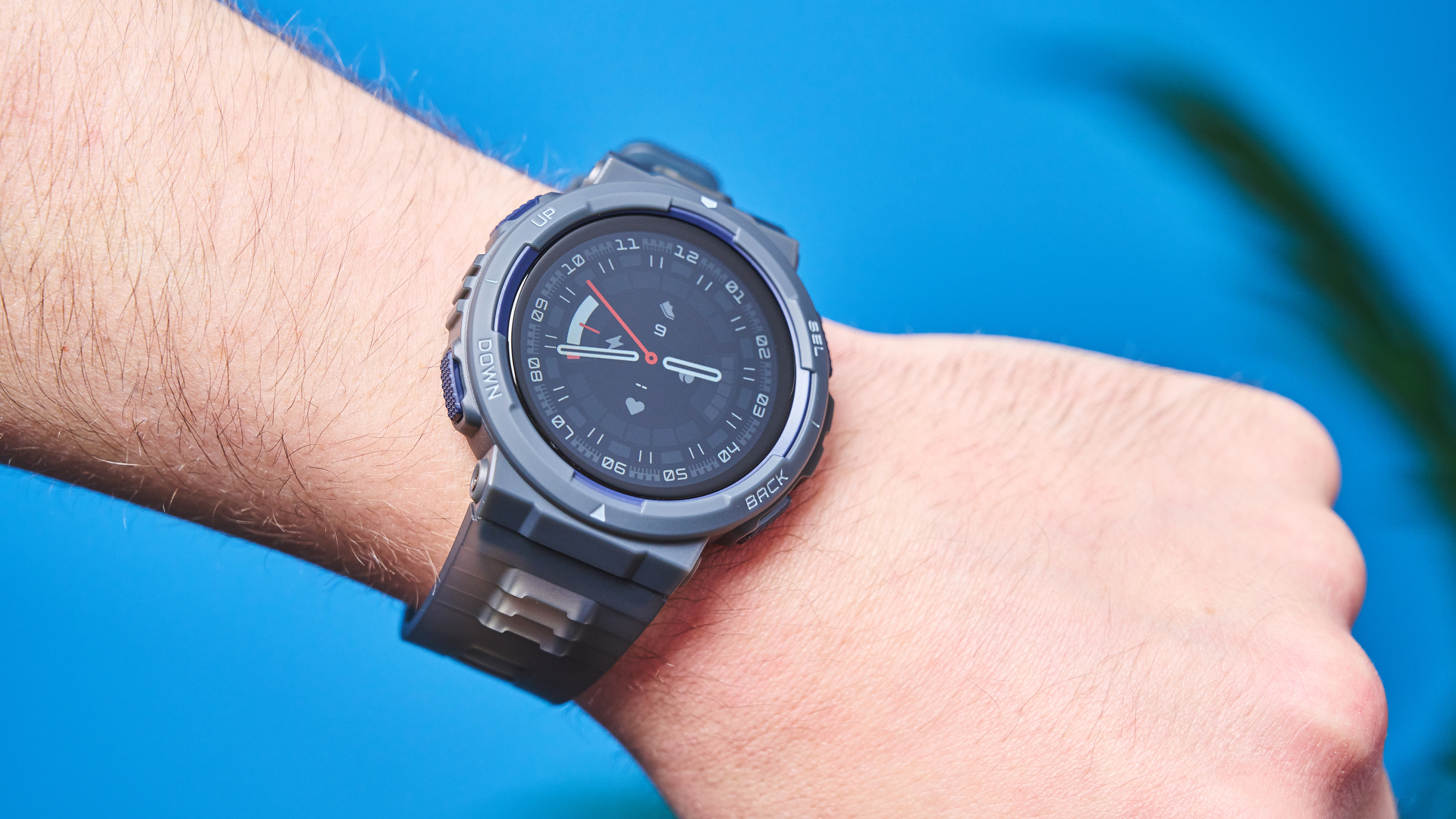
What the Amazfit Active Edge does brilliantly is track over 130 activities — including chess — and provide accurate stats, such as stress levels, oxygen saturation and breathing rate. It’s also got a responsive touchscreen that even lets you control the music playing on your smartphone, GPS, and a user-friendly app.
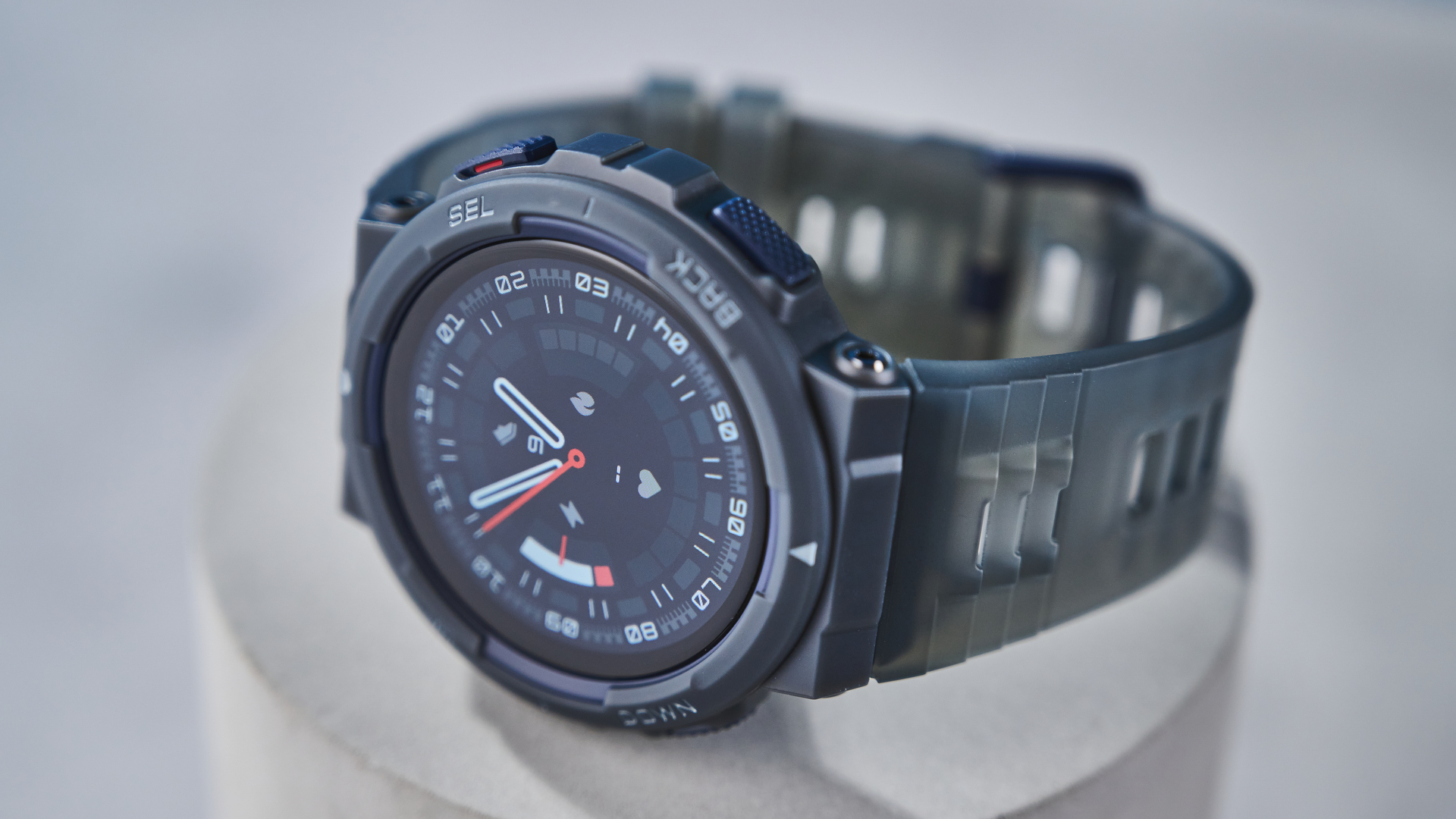
But the fitness tracker comes up short when it comes to sleep tracking as it doesn’t accurately log the time you’ve been awake. And if you want to see an in-depth sleep analysis, be ready to fork over $69. The find-my-watch feature isn’t very helpful either, and it doesn’t support voice commands — a feature that can be found in the cheaper Bip 5.
If the Active Edge was available for $100, I would say yes, it’s worth the money. But $149 seems like a lot to spend on a fitness tracker that doesn’t perform to its full potential. My advice? Get the Bip 5 instead.

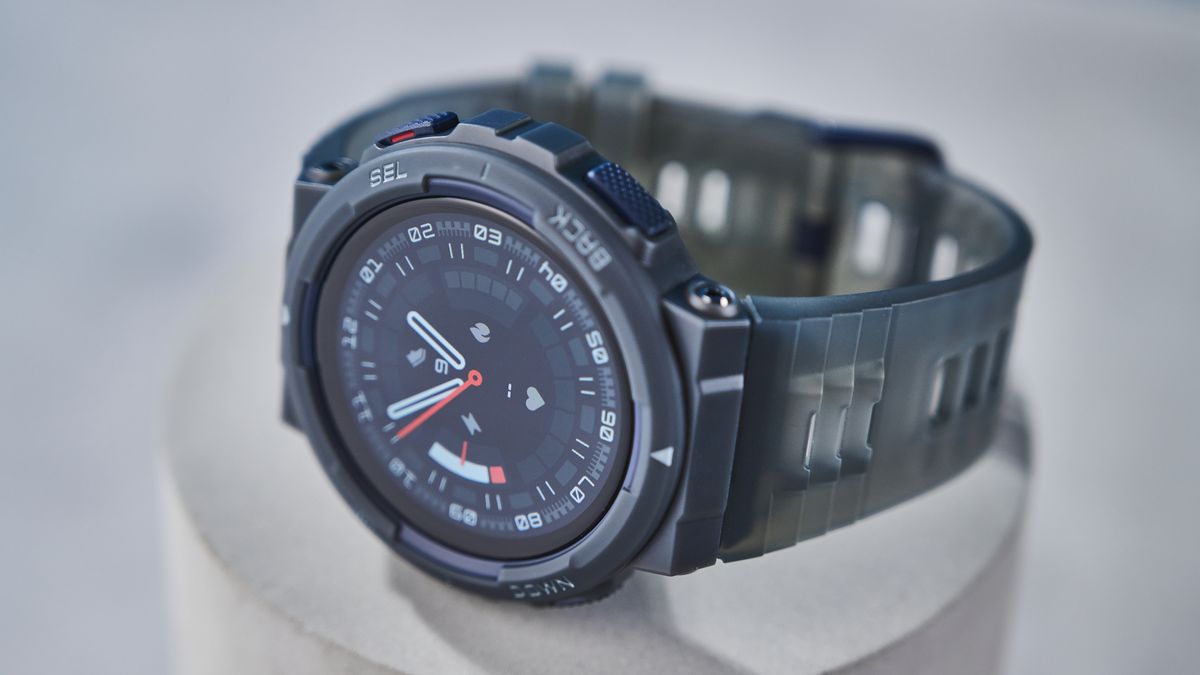
/static.texastribune.org/media/files/f5fdb1dff4d6fd788cba66ebaefe08d0/Paxton_GOP_Convention_2018_BD_TT.jpg)






